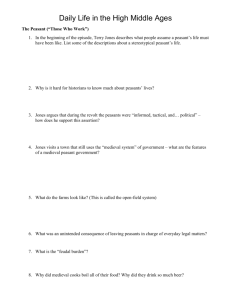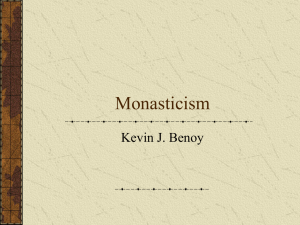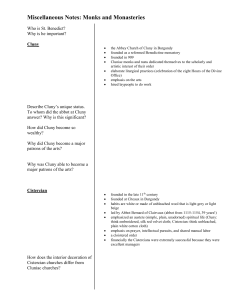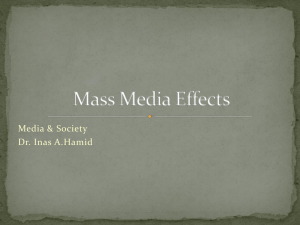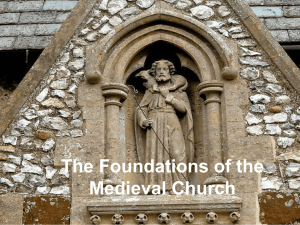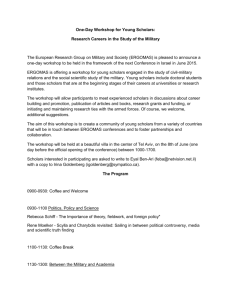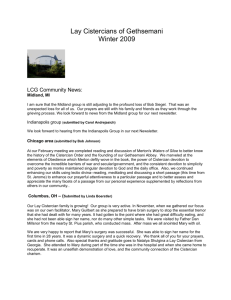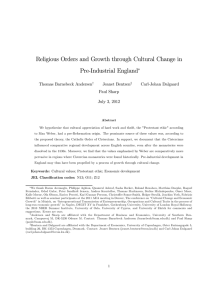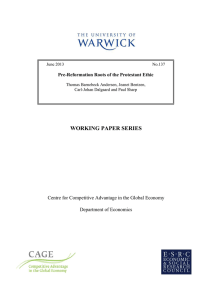Twelfth-century Renaissance After western empire broke up
advertisement
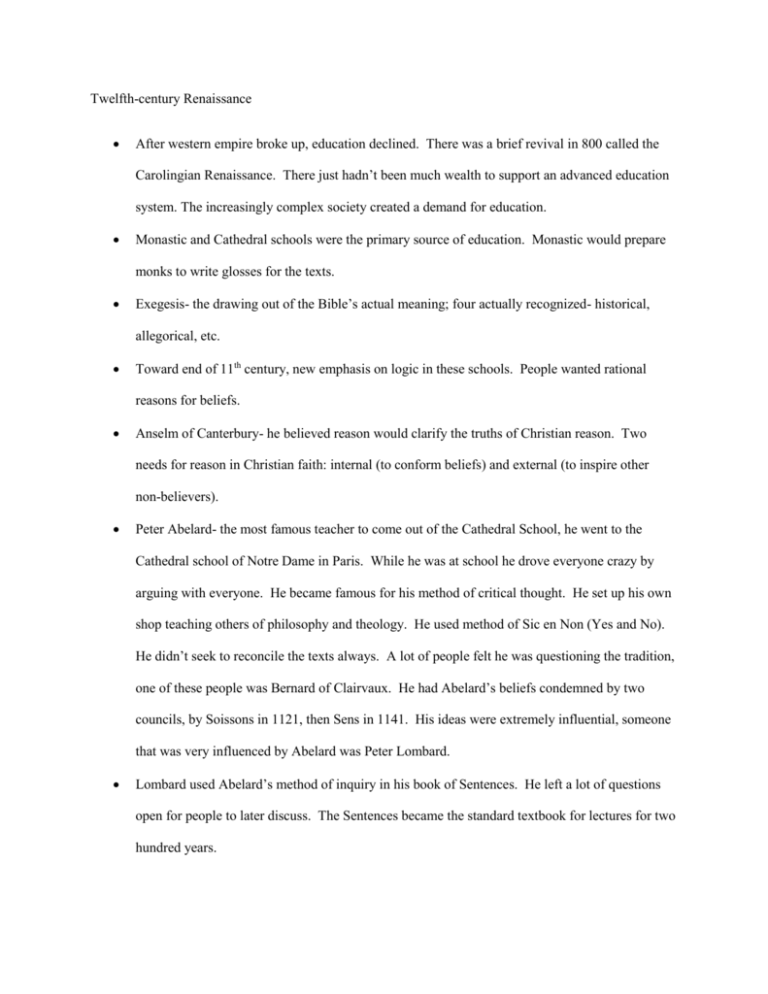
Twelfth-century Renaissance After western empire broke up, education declined. There was a brief revival in 800 called the Carolingian Renaissance. There just hadn’t been much wealth to support an advanced education system. The increasingly complex society created a demand for education. Monastic and Cathedral schools were the primary source of education. Monastic would prepare monks to write glosses for the texts. Exegesis- the drawing out of the Bible’s actual meaning; four actually recognized- historical, allegorical, etc. Toward end of 11th century, new emphasis on logic in these schools. People wanted rational reasons for beliefs. Anselm of Canterbury- he believed reason would clarify the truths of Christian reason. Two needs for reason in Christian faith: internal (to conform beliefs) and external (to inspire other non-believers). Peter Abelard- the most famous teacher to come out of the Cathedral School, he went to the Cathedral school of Notre Dame in Paris. While he was at school he drove everyone crazy by arguing with everyone. He became famous for his method of critical thought. He set up his own shop teaching others of philosophy and theology. He used method of Sic en Non (Yes and No). He didn’t seek to reconcile the texts always. A lot of people felt he was questioning the tradition, one of these people was Bernard of Clairvaux. He had Abelard’s beliefs condemned by two councils, by Soissons in 1121, then Sens in 1141. His ideas were extremely influential, someone that was very influenced by Abelard was Peter Lombard. Lombard used Abelard’s method of inquiry in his book of Sentences. He left a lot of questions open for people to later discuss. The Sentences became the standard textbook for lectures for two hundred years. The first universities emerged from the Cathedral schools. A university was a guild of scholars. It was an association of masters, sometimes with students. They would be tried in ecclesiastical courts. The scholars would write a masters thesis to become guild of scholars. One of the first important universities was in Bologna, specialized in Canon and Roman law, founded in 1088. Gratian’s Decretum came from this school early on. He was an Italian monk who collected Canon law into a coherent body into law. He emphasized the Pope’s supreme over everyone. Another important center of learning was Paris. University of Paris grew out of Notre Dame by 1200, end up being one of the most important universities ever. It’s made center point was theology. St. Victor was also very important. Hugh of St. Victor (1096-1141) believed it was important to understand the historical sense of the Bible before you could understand the spiritual side. He asked the Jews to clarify the meaning of the Bible. Andrew of St. Victor carried on his idea. This became an important part of Biblical studies. Europeans scholars recognized that scholars writing in Arabic were far ahead of them in science and philosophy and medicine. The tradition of Greek science continued in the Arabic east. Arabic scholars went on to make new advances in mathematics, astronomy, and medicine. Maimonides, Avicenna (Ivn Sina), and Averroes (Ibn Rushd) were important people during this time. Averroes was the judge in Spain; since he lived there many of his texts were available where Western Christians were. Spain and Sicily were centers of Muslim sciences and philosophy. Toledo was a major center of working. Another product from this movement was sponsored by Peter the Venerable, from Cluny. 1126, he produced a Latin translation of the Cahn and Apology of Al Kindi. The controversies that rose from this movement: Avveroes was controversy in his writings. These questions arose from the differences in Christianity and Arabic and Muslim philosophy, etc. Cistercian order- established in 1098 by the Abbot Robert of Molesme in France. These were in response to the growing wealth and lavishness of the Cluny Acts (which were established in response to the growing of the Benedictines) and the Benedictines. Robert left and established Citeaux. He was trying to return to the rule of St. Benedict (establishing how monks were supposed to live, very detailed). The Cistercians didn’t want to accept land and estates, only accept wasteland and a return to a strict rule of St. Benedict. The most famous Cistercian was Bernard of Clairvaux. He was a famous preacher, leader, inspirer, he preached the second crusade. He was a fanatical person when he imposed any sort of cause. How does this tie into the economy? The Cistercians were an important part of the revival of entire renaissance as well as economic one. In 1113, when Bernard became Cistercian there were only five, when he died there were over 350 in Western Europe. It comes down to the idea of only accepting wasteland. It could be brought into cultivation by asserting. They were a safe bet for the feudal Lord to establish and the Cistercians played a role in them as well. If he granted the Cistercians a piece of wasteland that had no value, let them do the rest to cultivate it. The Cistercians were responsible for bringing about a lot of pastureland for sheep, which resulted in northern England becoming a great place for raw wool, which was then exported to Flanders. Grain production in Eastern Europe exploded in this time period because the Cistercians brought the land into cultivation. This required a restructuring of the monastic organization in the monasteries. Because they were not being granted landed estates complete with peasants already living on land, they introduced idea of lay brothers, sometimes called conversos. Lay Brothers were monks who took their monastic vows, but were peasants and remained illiterate even though they were monks. They weren’t there to get an education or to produce manuscripts. They professed religious, but just worked the land. This freed up the time for the monks who were receiving an education to continue the writing of manuscripts, etc. This provided peasant and lay people with a new avenue into the religious world (didn’t have to be well educated). Often children or child oblates (offering of children) would be handed over to monasteries at a young age. The Benedictine and Cluny Act had a lot of children becoming nwias and living a religious life that they never chose. The Cistercians recognized child oblates were problematic, so they changed it. A man had to be at least 16 years old to enter the monastery, so the monks actually want to be there. There would be a one year probation period of being an nwias.
